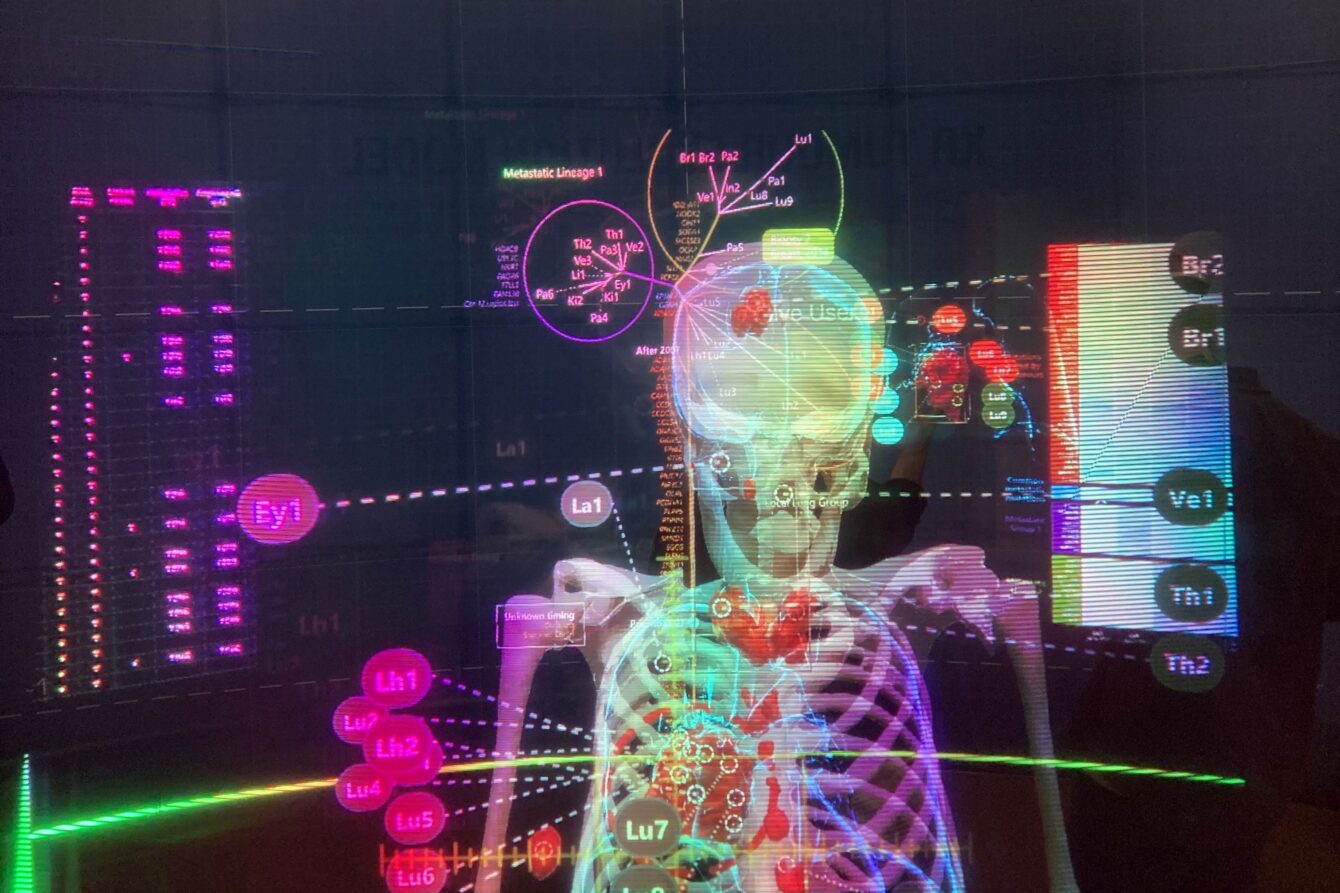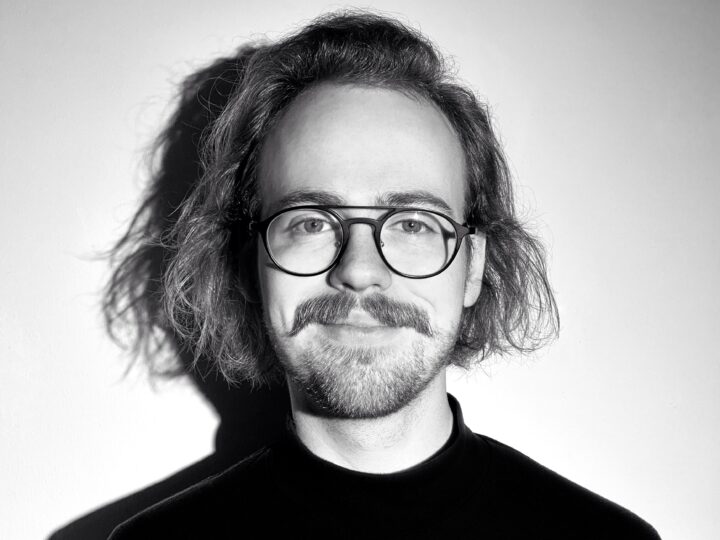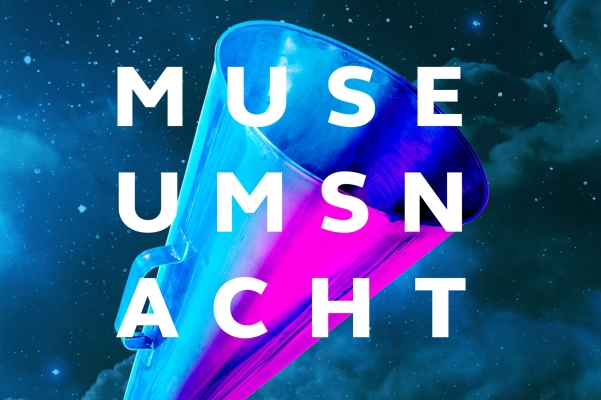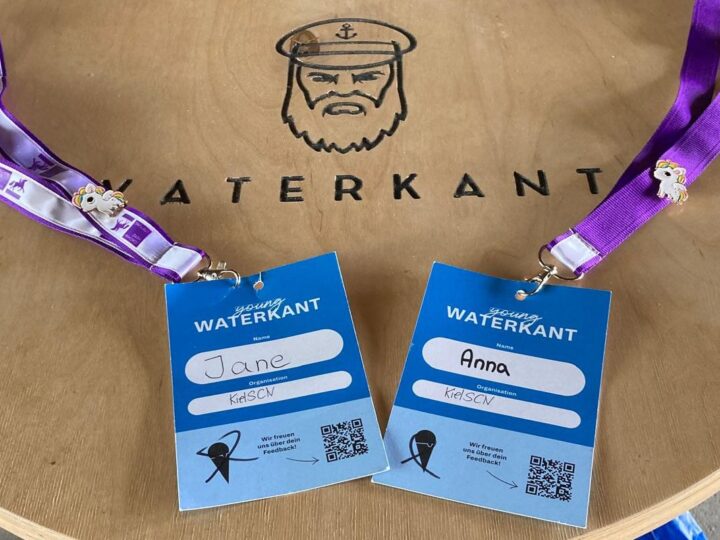VoM #4 – XR Tumor Evolution Project
Immersion in Cancer Research: The XR Tumor Evolution Project
During our visit to this year’s Ars Electronica Festival in Linz, we saw many attractive and inspiring exhibitions. Many impressive exhibits have stuck in our memories. One of them is the XR Tumor Evolution Project (XRTEP) – our choice for Visualization of the Month #4.
Representation of Multimodal Data – a Challenging Task
The project began with a patient’s decision to donate her inoperable cancer tissue for research. Over the years, medical monitoring has enabled scientists to gather a large amount of information on the growth of the cancer as well as its distribution in the patient’s body. The documentation began with the discovery of a tumor in the lung. At the time of death, there were eventually 89 different tumors, all of which the research team sequenced. This extent, as well as the complexity of the information obtained, created new challenges for the presentation of the data.
The Product of an Interdisciplinary Collaboration
An interdisciplinary team from the arc/sec Lab at the School of Architecture and Planning, NETwork! at the Faculty of Medical and Health Sciences and the Centre for eResearch at the University of Auckland took up the challenge. As a result, an immersive arena has been created in close collaboration with medical professionals.
At its center is an interactive, holographic model of the patient’s skeleton, organs and tumors. The associated data are arranged around the model in three concentric layers. In each case, the disciplinary specificity of the data increases with distance from the model. This allows for moments of intra- and interdisciplinary focus at different points in space. Through the use of HoloLens, users of the application are immersed in this virtual augmented reality and interact with the model at the same time.
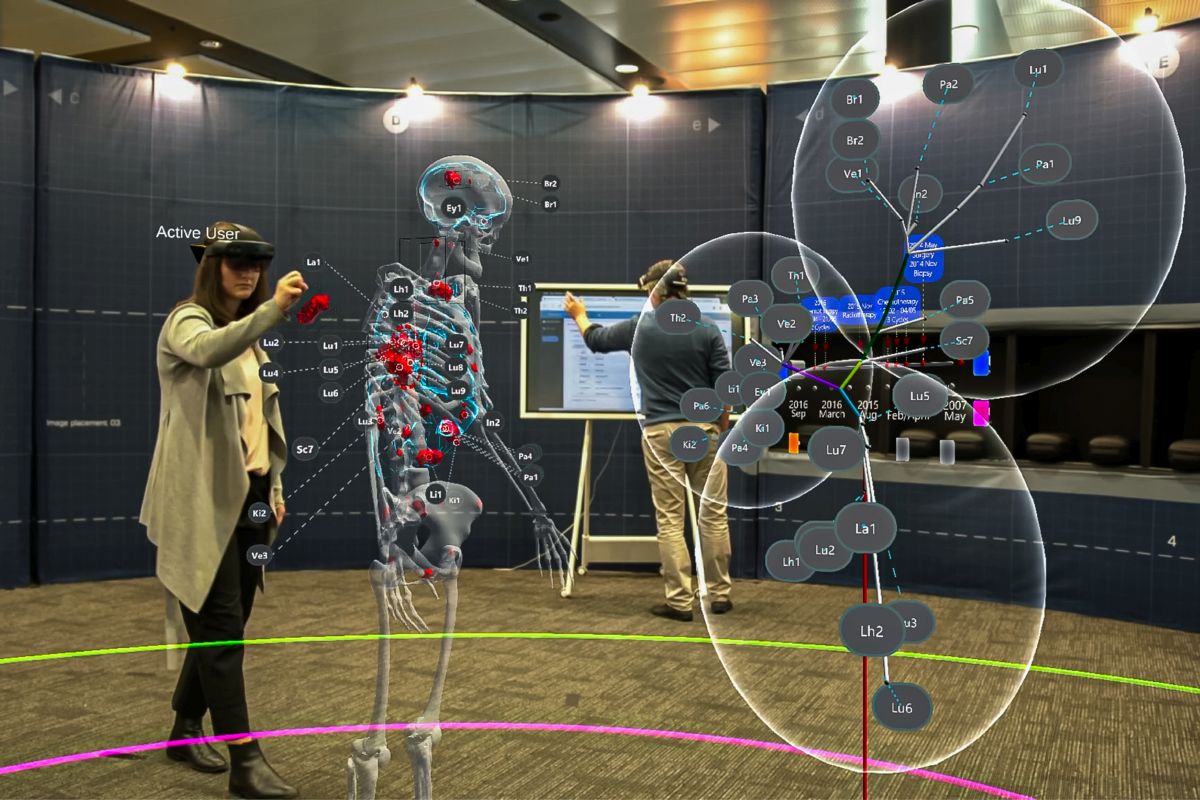
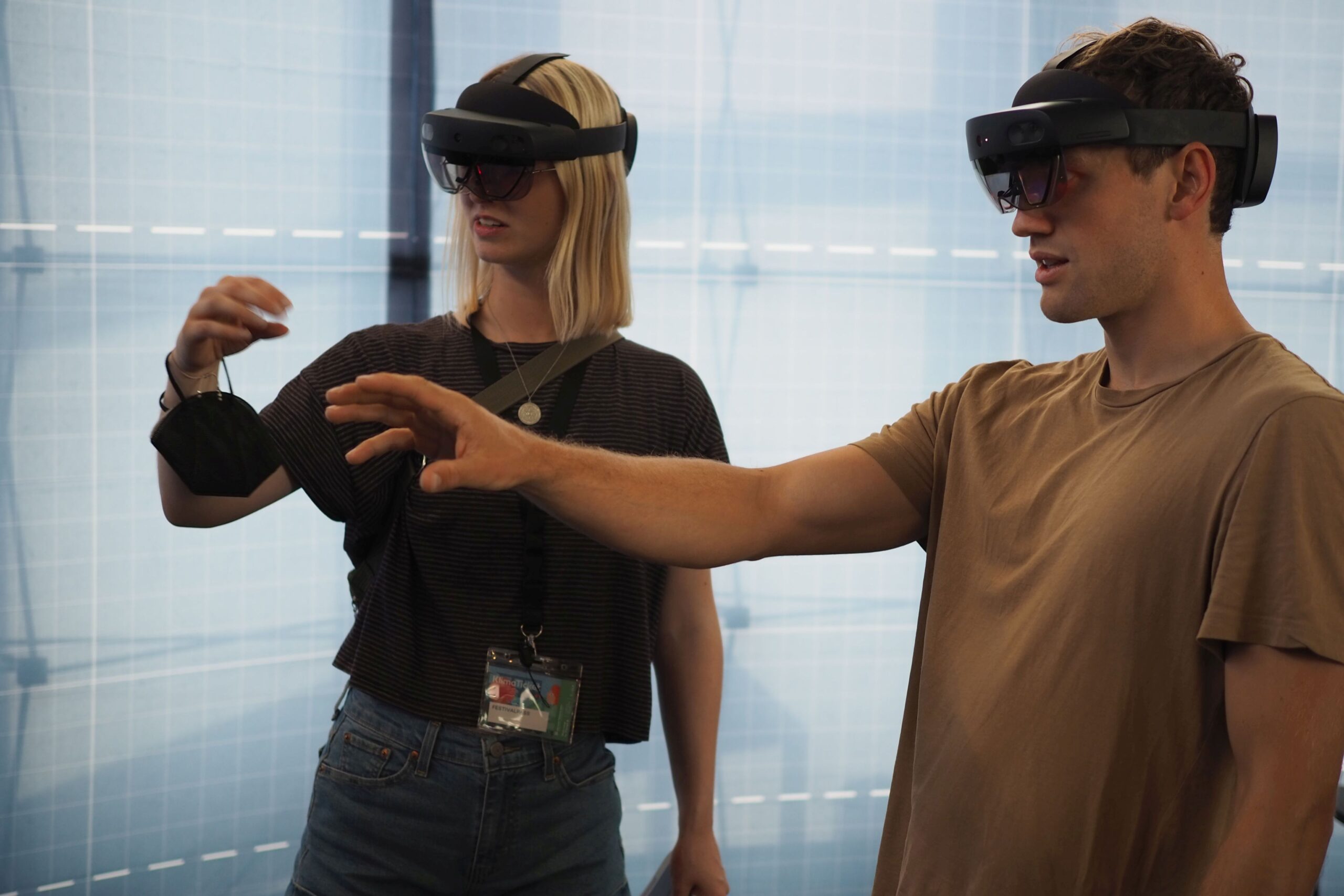
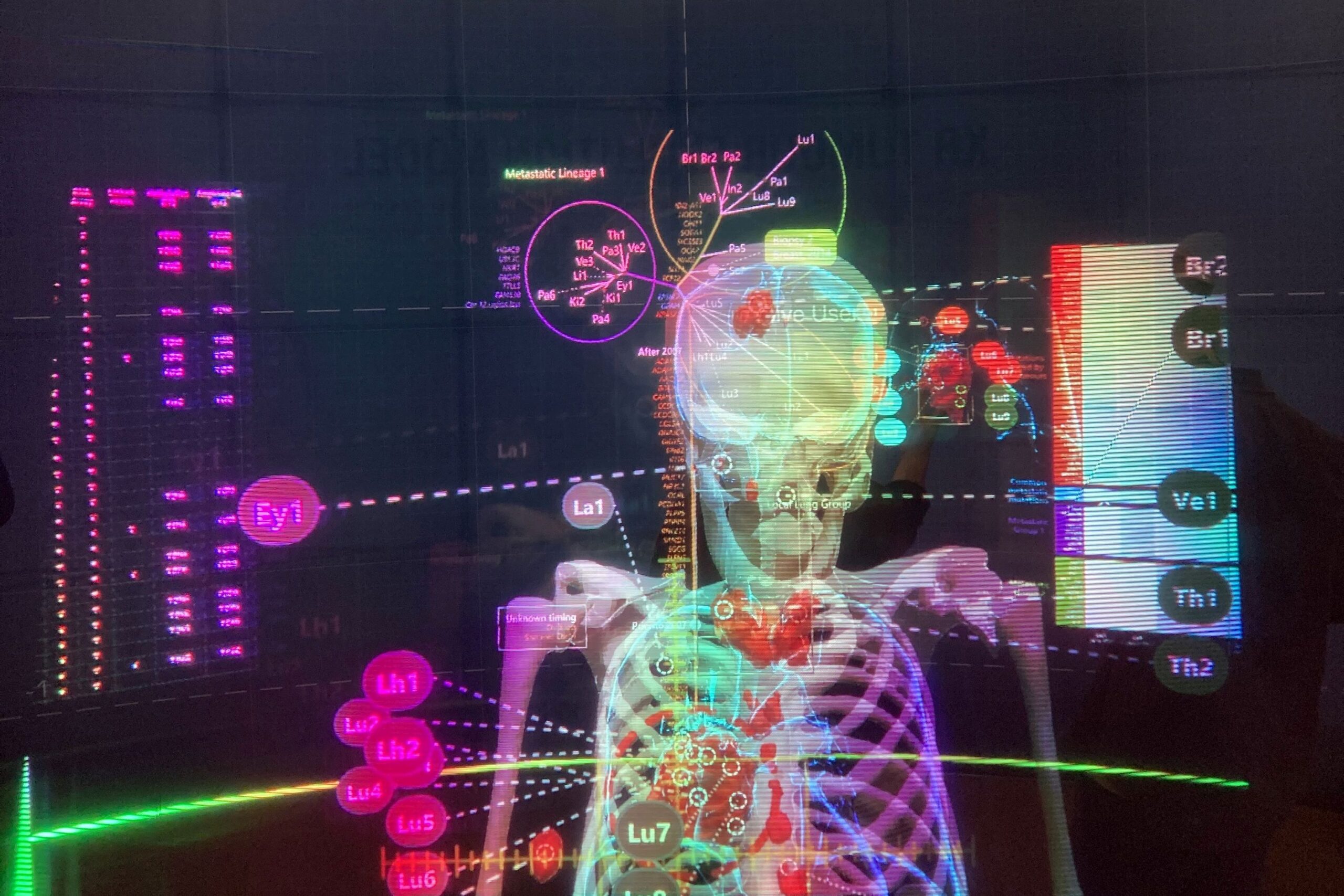
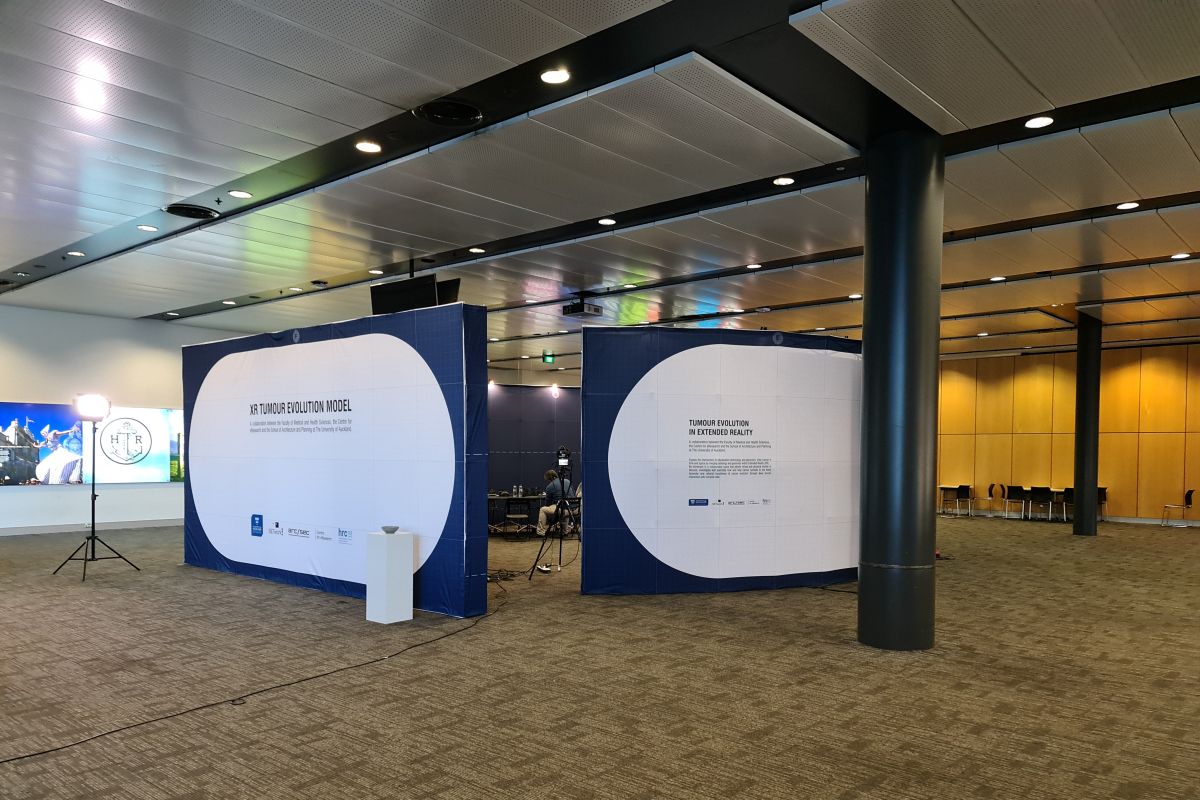
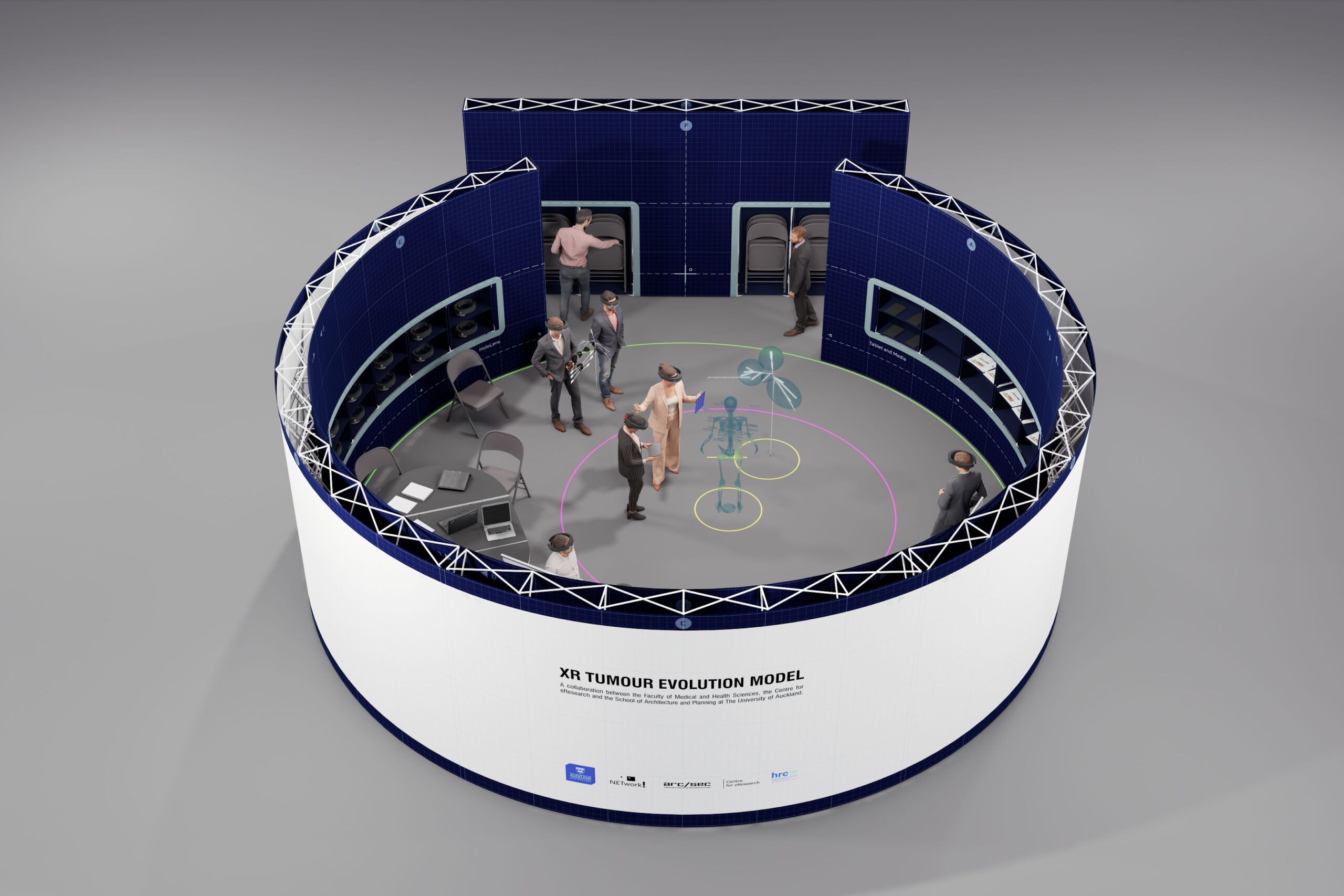
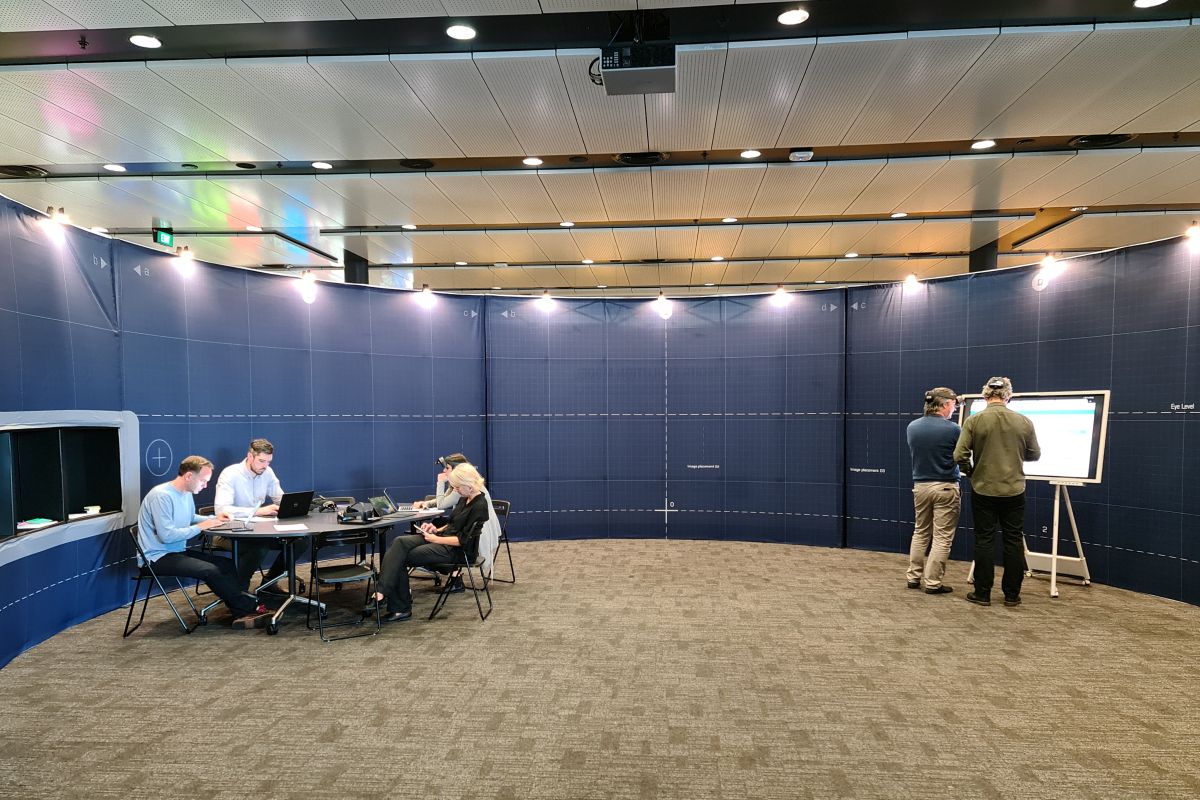
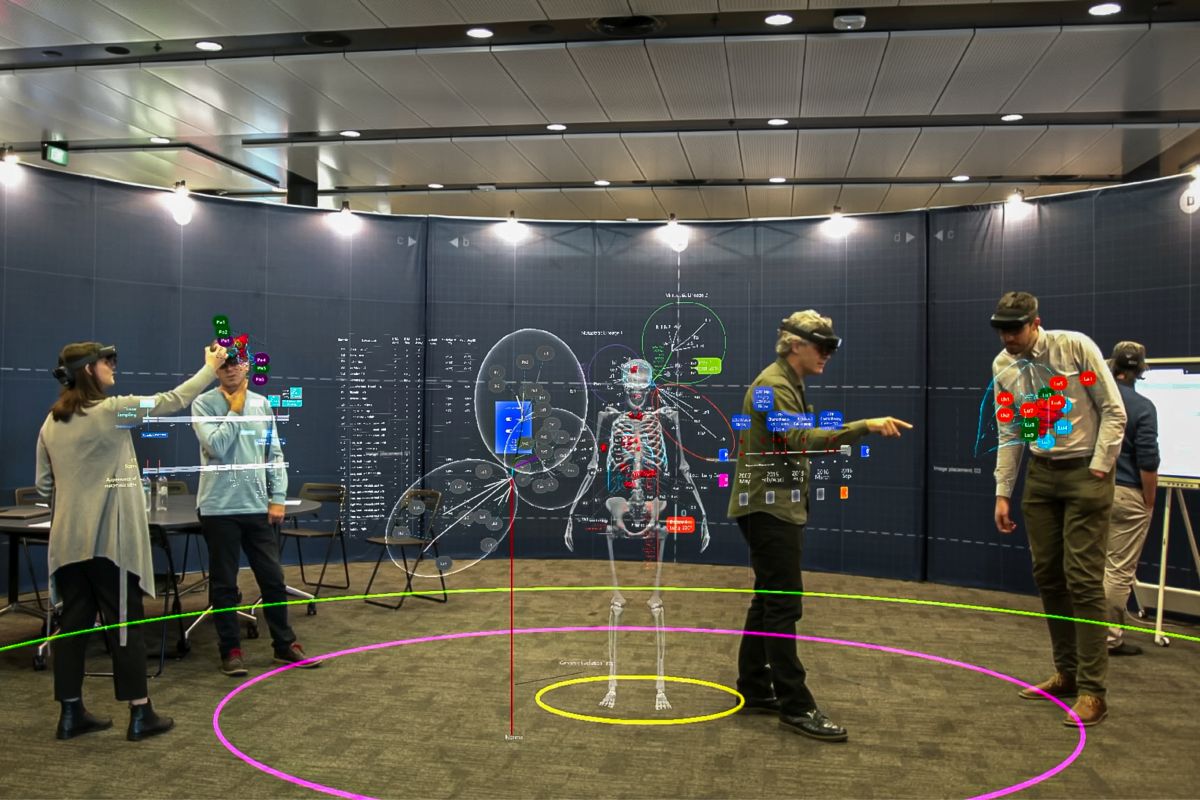
Immersive Technology – Human Interaction in Focus
To realize the project, the Auckland team used the latest and most complex immersive technology: extended reality. It allows an extension of the real environment with virtual objects and links them to a new reality. Users can also interact with the digital world. They can grab organs from the skeleton to get a closer look at the tumors inside. By sliding a time scale, users can see how tumors grow, shrink or spread over time.
Thus, immersive technologies not only offer the possibility of an extremely realistic representation of objects and data in virtual space. Rather, they enable users to enter a virtual environment and become part of it. From the users’ perspective and experience, this is probably even more important than the highly realistic representation of content. This feeling of being fully absorbed by an environment is referred to as immersion. It can be very effective in encouraging engagement with scientific content by creating a sense of awe and fascination.
However, the basic requirements for exploiting the full potential of immersion and binding users to the content are fluid interaction with the medium and a high level of usability. In other words, a high quality of user experience. This is also what our work at KielSCN aims at. We want to understand how emotions and usability are related in the user experience. For this purpose, we investigate in-situ processes that reveal in which way and how successfully individuals use visualizations when exploring scientific information.
Usage currently still limited to education and training in the medical field
Currently, the immediate use of this research project lies in the education and training of medical professionals. However, the KielSCN also sees promising potential in the use of XRTEP, or similar projects, in non-scientific target groups. This, however, requires the further development of the design features as well as the usability. In addition, a stronger guidance of the user during the exploration seems promising to expand the circle of users to a broader target group. This could be achieved, for example, by embedding it in a narrative or storytelling.
XRTEP facilitates access to cancer research and abstract data
Fundamentally, the XRTEP represents an exemplary implementation. It offers a novel and unique experience to engage with cancer research data. Not only do the developers generate attention, they also facilitate access to abstract genomic data and the contexts of an oppressive topic.
Learn more about the XR Tumor Evolution Project
Detailed background information is available on the project website.
About the Visualization of the Month
In our series “Visualization of the Month”, we feature an outstanding visualization on the second Wednesday of each month. One of the criteria for the selection is the extent to which it is aesthetically and emotionally appealing from a design perspective. In addition, we look at the information content. This also includes how the users of the visualization are supported in better comprehending complex contexts. The selection is made within the KielSCN team and involves expertise from the fields of information design, educational science and emotion research, as well as science communication research.
